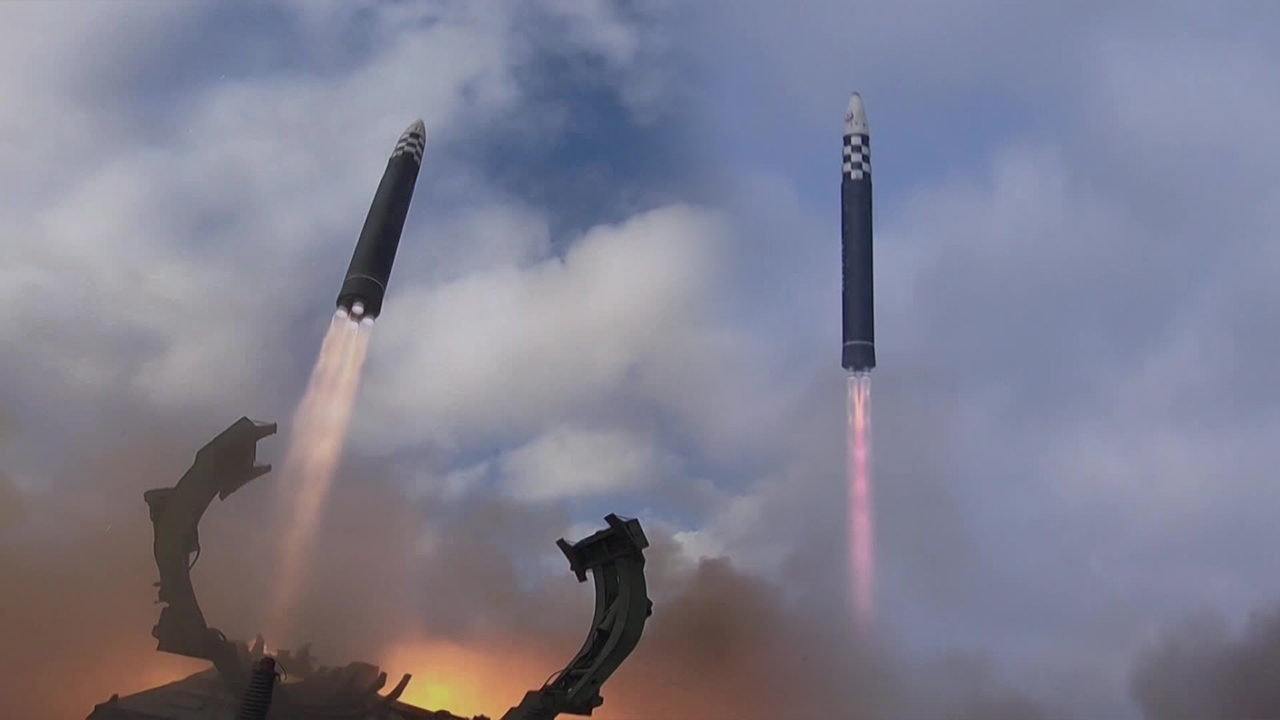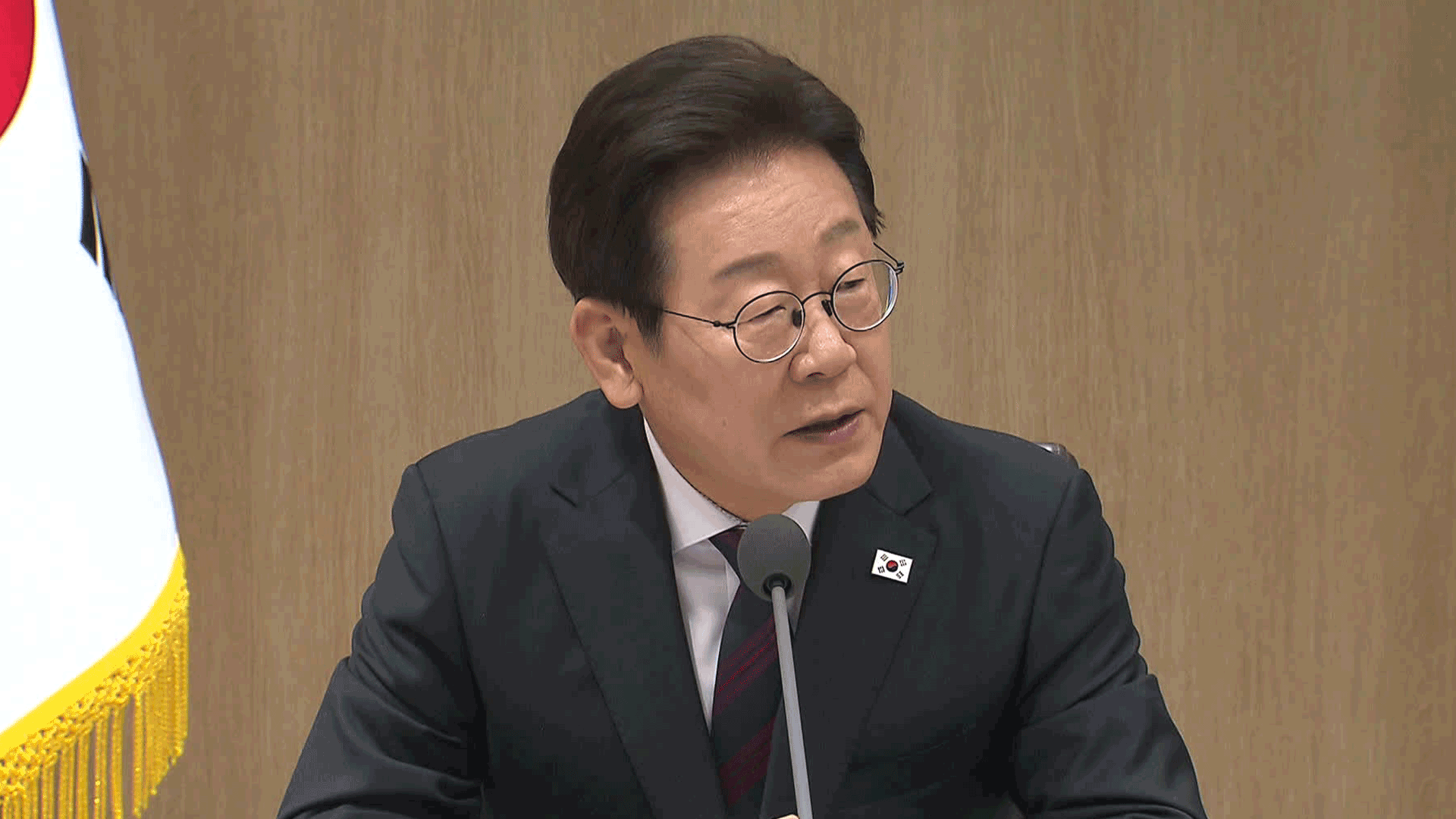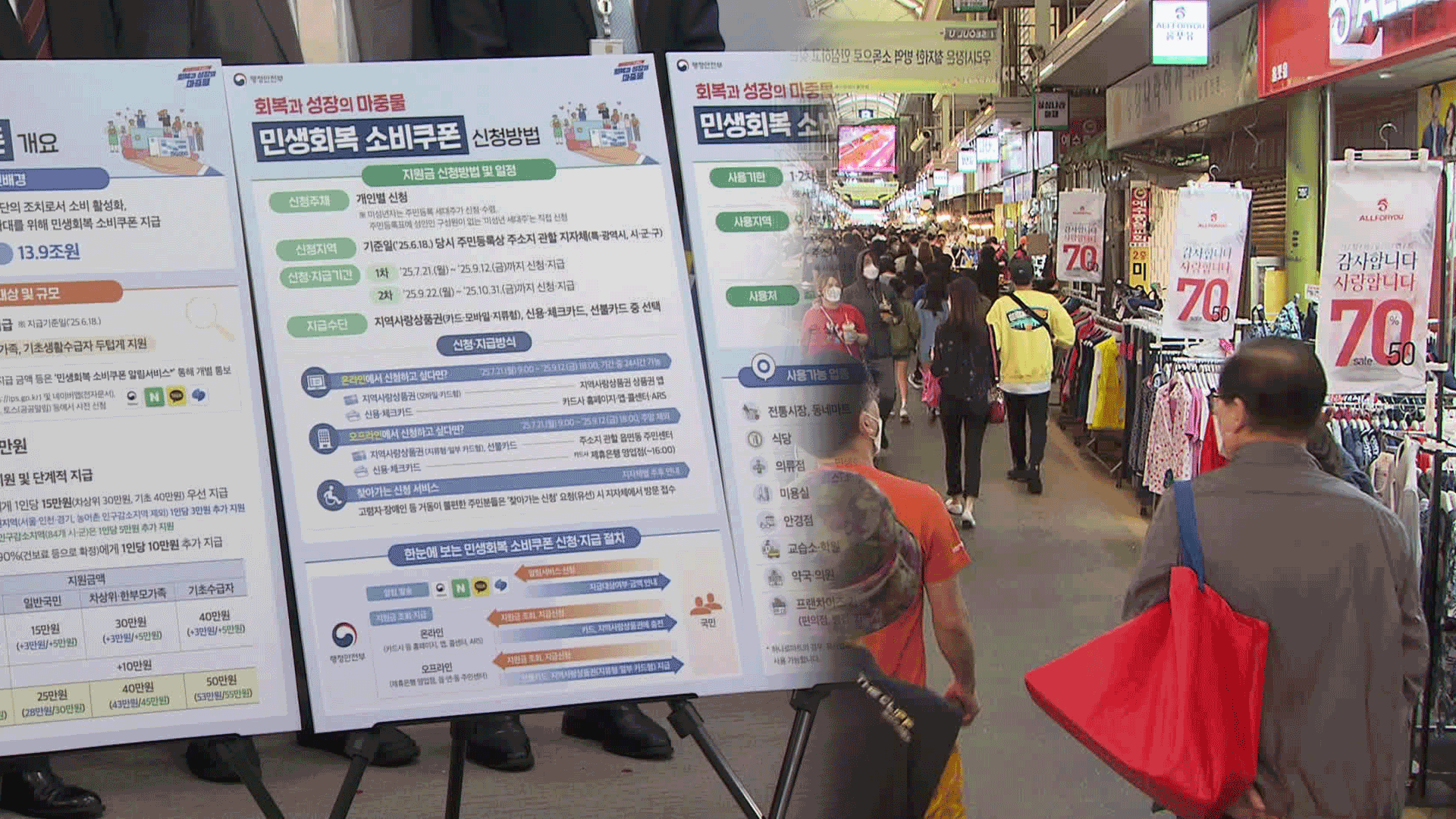N. Korea's ICBM re-entry tech gaps spark concerns over Russian support
입력 2024.10.23 (22:52)
읽어주기 기능은 크롬기반의
브라우저에서만 사용하실 수 있습니다.
[Anchor]
There are many expert analyses suggesting that while North Korea showcases its technological prowess with intercontinental ballistic missiles, its re-entry technology is still lacking.
There are indications that we should pay attention to whether Russia's technology will be transferred to the North due to the close ties between the countries.
Reporter Kim Yong-jun has the story.
[Report]
The North launched the Hwasong-17 ICBM last year, increasing thrust by bundling multiple engines together, achieving more than double the thrust.
In fact, the Hwasong-17 reached an altitude of 6,045 km and flew approximately 1,000 km.
If launched at a normal angle, its range would be about 15,000 km, covering the entire United States.
Having made progress in thrust, the North developed the solid-fuel-based Hwasong-18, which also reached 6,648 km and flew 1,000 km.
Solid fuel allows for long-term storage and covert launches, making it difficult to detect signs of launch.
Experts evaluate that the consistent flight of the Hwasong-18 in three launches indicates a reliable technological capability for solid fuel.
The key issue is whether the North has secured re-entry technology for its warheads.
An ICBM that has exited the atmosphere must withstand the extremely high temperatures of about 10,000 degrees during re-entry to hit its target, and it must endure this for a much longer time when launched at a normal angle compared to a near-vertical launch like now.
This is the moment the North Korean ICBM was captured by Japanese fighter jets during its descent.
Two flashes are seen before disappearing, suggesting that the warhead could not withstand the heat and split apart, burning up.
This is different from the test re-entry vehicles of U.S. ICBMs, which fall in complete form.
[Lee Chun-keun/Visiting Expert at the Korea Institute of S&T Evaluation and Planning: "We need to see whether it can re-enter normally when launched at a normal angle, but the DPRK has not yet been able to do that and is in a situation where it cannot, so it ultimately cannot advance to the next stage, which raises issues of reliability."]
Experts analyze that while there is a possibility that Russia may provide re-entry technology to the North, we should also pay attention to whether they will supply materials for re-entry vehicles that are strong against heat and pressure, such as high-performance carbon fiber.
KBS News, Kim Yong-jun.
There are many expert analyses suggesting that while North Korea showcases its technological prowess with intercontinental ballistic missiles, its re-entry technology is still lacking.
There are indications that we should pay attention to whether Russia's technology will be transferred to the North due to the close ties between the countries.
Reporter Kim Yong-jun has the story.
[Report]
The North launched the Hwasong-17 ICBM last year, increasing thrust by bundling multiple engines together, achieving more than double the thrust.
In fact, the Hwasong-17 reached an altitude of 6,045 km and flew approximately 1,000 km.
If launched at a normal angle, its range would be about 15,000 km, covering the entire United States.
Having made progress in thrust, the North developed the solid-fuel-based Hwasong-18, which also reached 6,648 km and flew 1,000 km.
Solid fuel allows for long-term storage and covert launches, making it difficult to detect signs of launch.
Experts evaluate that the consistent flight of the Hwasong-18 in three launches indicates a reliable technological capability for solid fuel.
The key issue is whether the North has secured re-entry technology for its warheads.
An ICBM that has exited the atmosphere must withstand the extremely high temperatures of about 10,000 degrees during re-entry to hit its target, and it must endure this for a much longer time when launched at a normal angle compared to a near-vertical launch like now.
This is the moment the North Korean ICBM was captured by Japanese fighter jets during its descent.
Two flashes are seen before disappearing, suggesting that the warhead could not withstand the heat and split apart, burning up.
This is different from the test re-entry vehicles of U.S. ICBMs, which fall in complete form.
[Lee Chun-keun/Visiting Expert at the Korea Institute of S&T Evaluation and Planning: "We need to see whether it can re-enter normally when launched at a normal angle, but the DPRK has not yet been able to do that and is in a situation where it cannot, so it ultimately cannot advance to the next stage, which raises issues of reliability."]
Experts analyze that while there is a possibility that Russia may provide re-entry technology to the North, we should also pay attention to whether they will supply materials for re-entry vehicles that are strong against heat and pressure, such as high-performance carbon fiber.
KBS News, Kim Yong-jun.
■ 제보하기
▷ 카카오톡 : 'KBS제보' 검색, 채널 추가
▷ 전화 : 02-781-1234, 4444
▷ 이메일 : kbs1234@kbs.co.kr
▷ 유튜브, 네이버, 카카오에서도 KBS뉴스를 구독해주세요!
- N. Korea's ICBM re-entry tech gaps spark concerns over Russian support
-
- 입력 2024-10-23 22:52:58

[Anchor]
There are many expert analyses suggesting that while North Korea showcases its technological prowess with intercontinental ballistic missiles, its re-entry technology is still lacking.
There are indications that we should pay attention to whether Russia's technology will be transferred to the North due to the close ties between the countries.
Reporter Kim Yong-jun has the story.
[Report]
The North launched the Hwasong-17 ICBM last year, increasing thrust by bundling multiple engines together, achieving more than double the thrust.
In fact, the Hwasong-17 reached an altitude of 6,045 km and flew approximately 1,000 km.
If launched at a normal angle, its range would be about 15,000 km, covering the entire United States.
Having made progress in thrust, the North developed the solid-fuel-based Hwasong-18, which also reached 6,648 km and flew 1,000 km.
Solid fuel allows for long-term storage and covert launches, making it difficult to detect signs of launch.
Experts evaluate that the consistent flight of the Hwasong-18 in three launches indicates a reliable technological capability for solid fuel.
The key issue is whether the North has secured re-entry technology for its warheads.
An ICBM that has exited the atmosphere must withstand the extremely high temperatures of about 10,000 degrees during re-entry to hit its target, and it must endure this for a much longer time when launched at a normal angle compared to a near-vertical launch like now.
This is the moment the North Korean ICBM was captured by Japanese fighter jets during its descent.
Two flashes are seen before disappearing, suggesting that the warhead could not withstand the heat and split apart, burning up.
This is different from the test re-entry vehicles of U.S. ICBMs, which fall in complete form.
[Lee Chun-keun/Visiting Expert at the Korea Institute of S&T Evaluation and Planning: "We need to see whether it can re-enter normally when launched at a normal angle, but the DPRK has not yet been able to do that and is in a situation where it cannot, so it ultimately cannot advance to the next stage, which raises issues of reliability."]
Experts analyze that while there is a possibility that Russia may provide re-entry technology to the North, we should also pay attention to whether they will supply materials for re-entry vehicles that are strong against heat and pressure, such as high-performance carbon fiber.
KBS News, Kim Yong-jun.
There are many expert analyses suggesting that while North Korea showcases its technological prowess with intercontinental ballistic missiles, its re-entry technology is still lacking.
There are indications that we should pay attention to whether Russia's technology will be transferred to the North due to the close ties between the countries.
Reporter Kim Yong-jun has the story.
[Report]
The North launched the Hwasong-17 ICBM last year, increasing thrust by bundling multiple engines together, achieving more than double the thrust.
In fact, the Hwasong-17 reached an altitude of 6,045 km and flew approximately 1,000 km.
If launched at a normal angle, its range would be about 15,000 km, covering the entire United States.
Having made progress in thrust, the North developed the solid-fuel-based Hwasong-18, which also reached 6,648 km and flew 1,000 km.
Solid fuel allows for long-term storage and covert launches, making it difficult to detect signs of launch.
Experts evaluate that the consistent flight of the Hwasong-18 in three launches indicates a reliable technological capability for solid fuel.
The key issue is whether the North has secured re-entry technology for its warheads.
An ICBM that has exited the atmosphere must withstand the extremely high temperatures of about 10,000 degrees during re-entry to hit its target, and it must endure this for a much longer time when launched at a normal angle compared to a near-vertical launch like now.
This is the moment the North Korean ICBM was captured by Japanese fighter jets during its descent.
Two flashes are seen before disappearing, suggesting that the warhead could not withstand the heat and split apart, burning up.
This is different from the test re-entry vehicles of U.S. ICBMs, which fall in complete form.
[Lee Chun-keun/Visiting Expert at the Korea Institute of S&T Evaluation and Planning: "We need to see whether it can re-enter normally when launched at a normal angle, but the DPRK has not yet been able to do that and is in a situation where it cannot, so it ultimately cannot advance to the next stage, which raises issues of reliability."]
Experts analyze that while there is a possibility that Russia may provide re-entry technology to the North, we should also pay attention to whether they will supply materials for re-entry vehicles that are strong against heat and pressure, such as high-performance carbon fiber.
KBS News, Kim Yong-jun.
-
-

김용준 기자 okok@kbs.co.kr
김용준 기자의 기사 모음
-
이 기사가 좋으셨다면
-
좋아요
0
-
응원해요
0
-
후속 원해요
0















이 기사에 대한 의견을 남겨주세요.